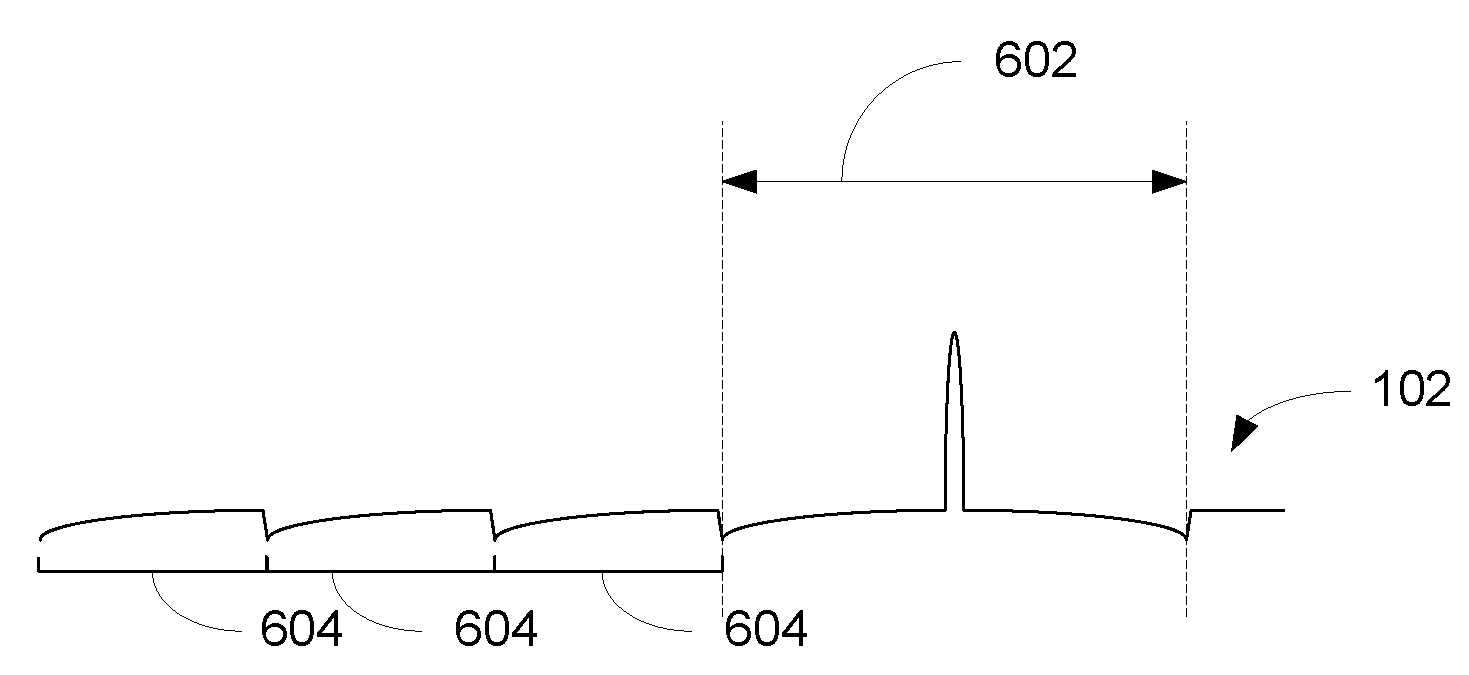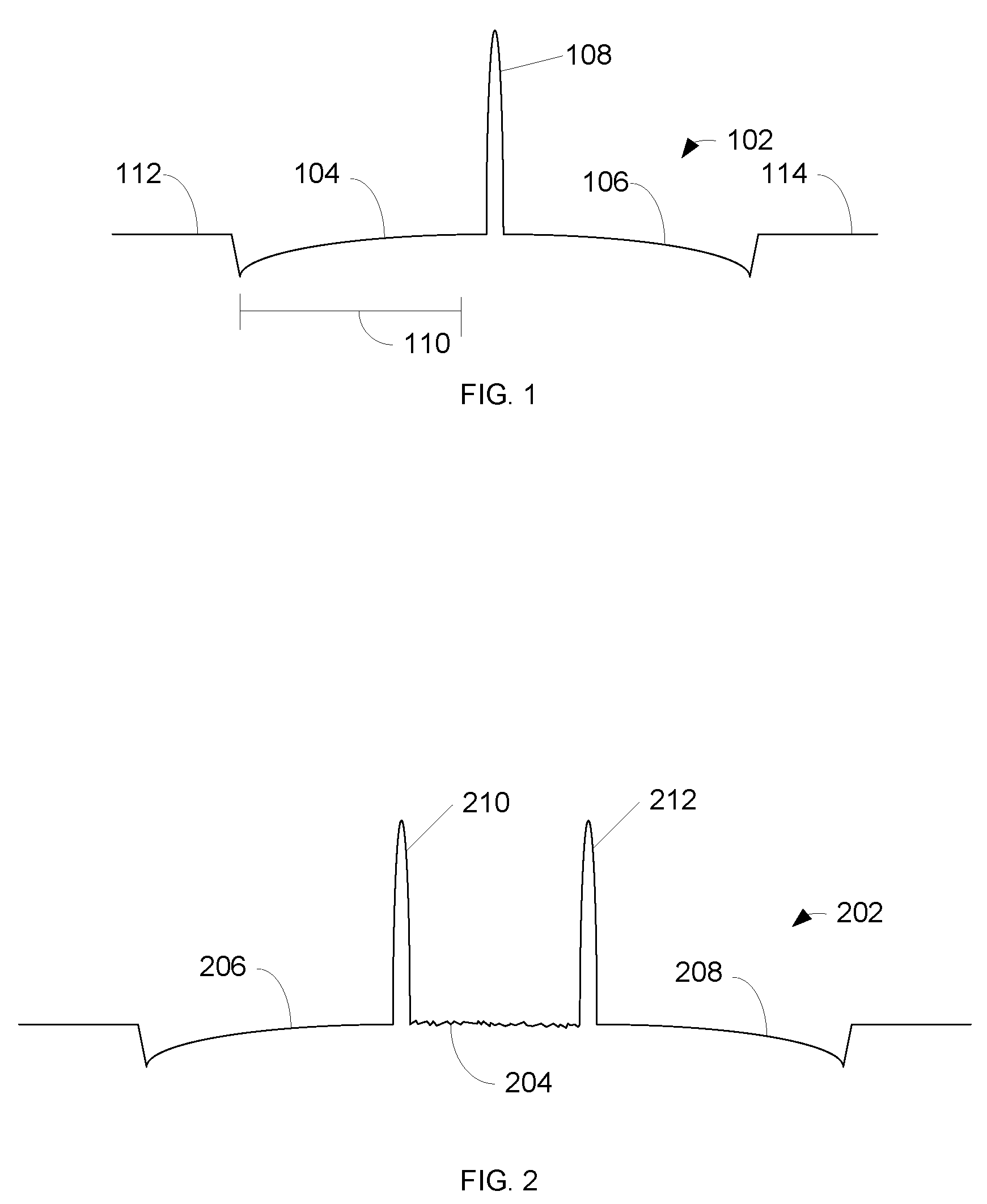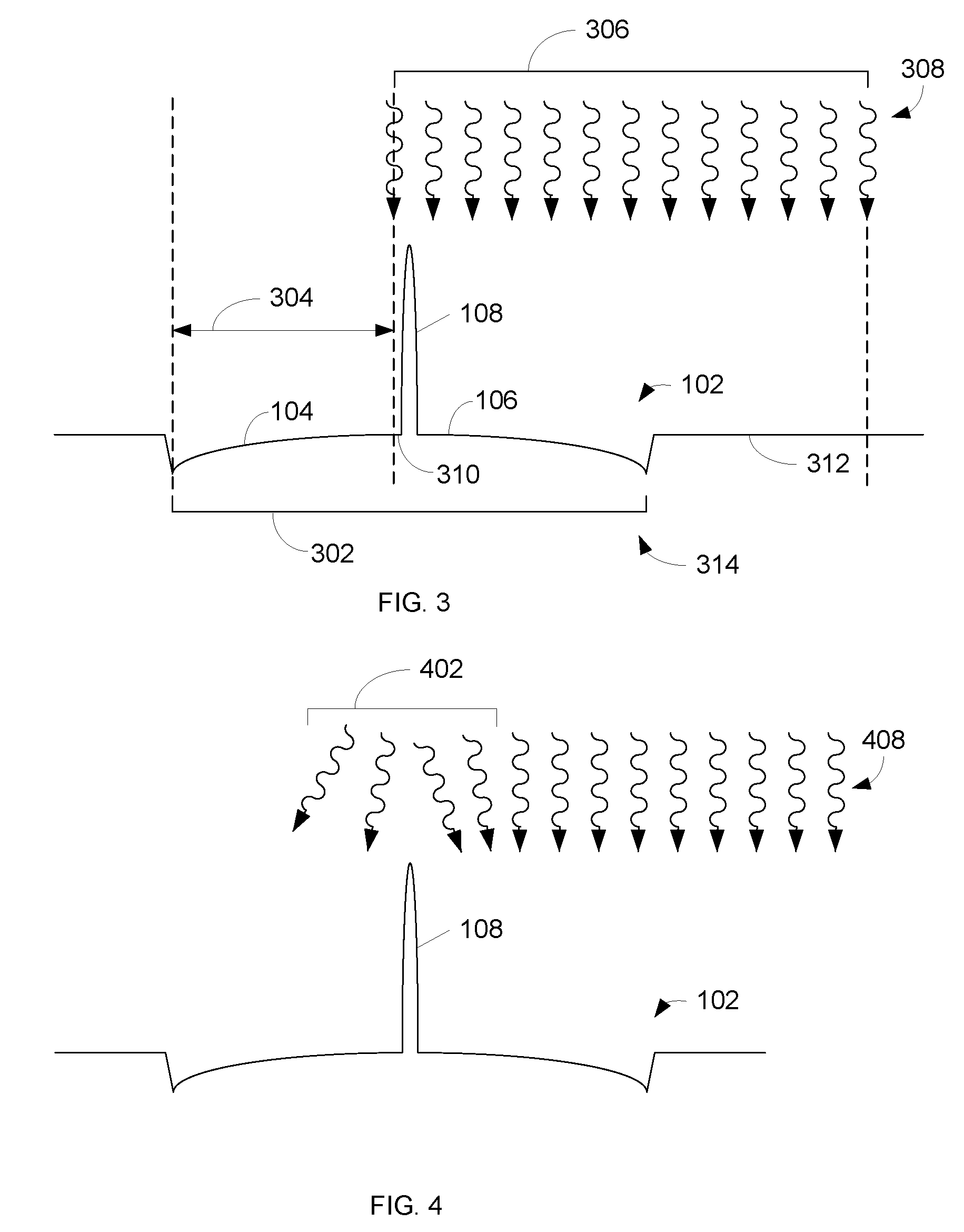Systems and methods for optimizing the crystallization of amorphous silicon
a technology of amorphous silicon and crystallization method, which is applied in the field of systems and methods for manufacturing lcds, can solve the problems of high process operational cost, low productivity of a-si technology, and approaching its limitations, and achieve the effect of improving the uniformity of transistors made in the material
- Summary
- Abstract
- Description
- Claims
- Application Information
AI Technical Summary
Benefits of technology
Problems solved by technology
Method used
Image
Examples
Embodiment Construction
.”
BRIEF DESCRIPTION OF THE FIGURES
[0025]Features, aspects, and embodiments of the inventions are described in conjunction with the attached drawings, in which:
[0026]FIG. 1 is a diagram illustrating an example cross section of a film surface after a single pulse irradiation;
[0027]FIG. 2 is a diagram illustrating another example cross section of a film surface after a single pulse irradiation;
[0028]FIG. 3 is a diagram illustrating an example position of a beam during a second irradiation of the cross section of a film surface of FIG. 1;
[0029]FIG. 4 is a diagram illustrating an example scattering of incident photons during the second irradiation illustrated in FIG. 3;
[0030]FIGS. 5A-5C are diagrams illustrating example short-axis spatial intensity profiles;
[0031]FIG. 6 is a diagram illustrating an example position of a film after “n” pulses;
[0032]FIG. 7 is a diagram illustrating a beam spatial intensity and an example position of a beam after “n+1” pulses;
[0033]FIG. 8 is an example devi...
PUM
| Property | Measurement | Unit |
|---|---|---|
| step size | aaaaa | aaaaa |
| step size | aaaaa | aaaaa |
| wavelengths | aaaaa | aaaaa |
Abstract
Description
Claims
Application Information
 Login to View More
Login to View More - R&D
- Intellectual Property
- Life Sciences
- Materials
- Tech Scout
- Unparalleled Data Quality
- Higher Quality Content
- 60% Fewer Hallucinations
Browse by: Latest US Patents, China's latest patents, Technical Efficacy Thesaurus, Application Domain, Technology Topic, Popular Technical Reports.
© 2025 PatSnap. All rights reserved.Legal|Privacy policy|Modern Slavery Act Transparency Statement|Sitemap|About US| Contact US: help@patsnap.com



